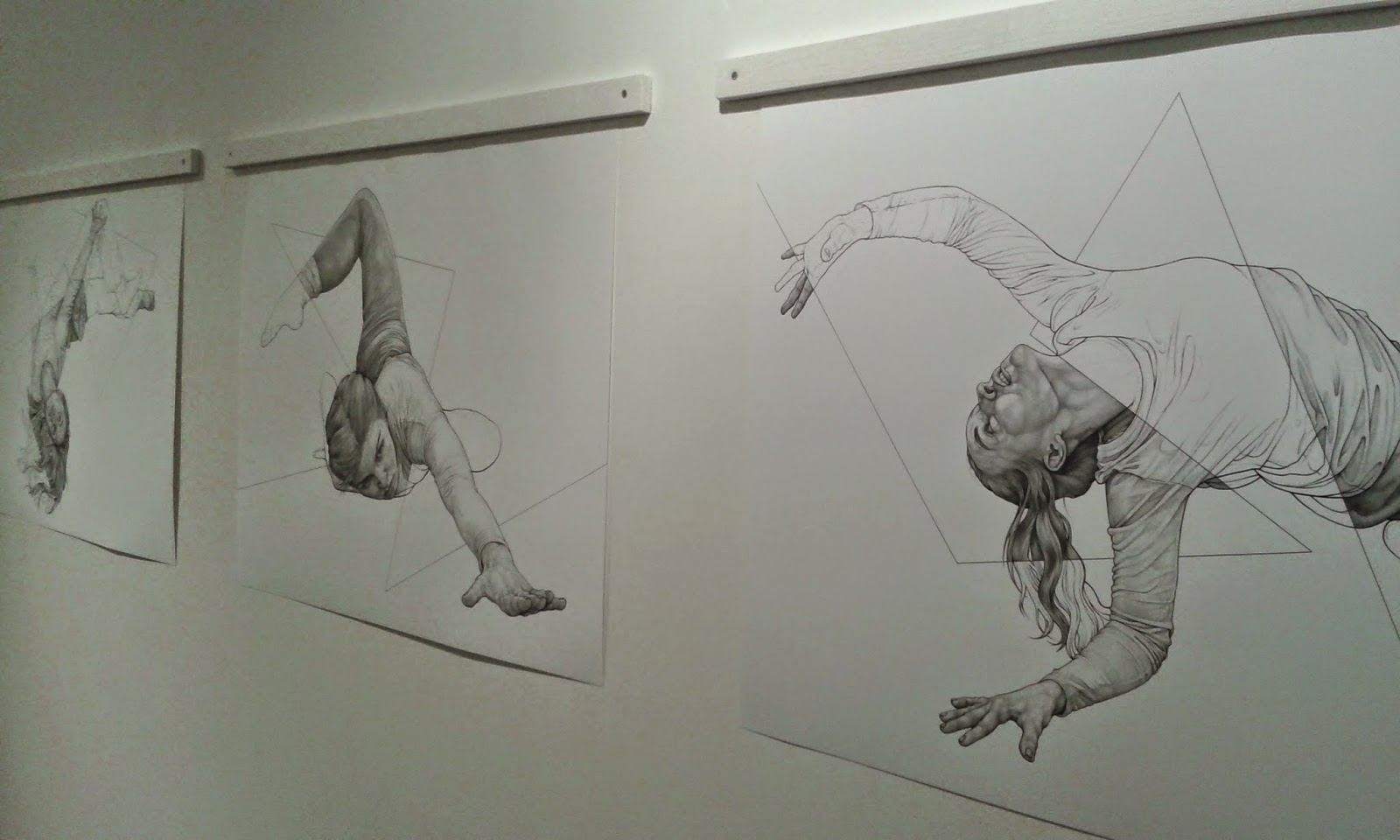One of the modules that
you will have to respond to this year will be the PPP one. Whether you are at
level 4, 5 or 6 this module runs right through the course. One aspect of this
is a reflection on possible opportunities to advance your career by exhibiting.
Visiting local exhibitions can be a great way to develop documentary evidence
of this. For instance Karolina Szymkiewicz’s exhibition
"Pandora's Box" opened
this Thursday at Union105 (105 Chapeltown Road, LS7 3HY, Leeds) and is open
until the 5th Oct. My first observation is a basic one, I went to
the opening and not one student from LCA attended. I know it was first week
back, but there was free wine. I presume everyone has a LVAF account, if not
you should have one. Go to http://www.lvaf.org.uk I do realise they send out lots of information that might not be directly
relevant but they do advertise most of the openings that take place in the area
and openings are free and usually drinks and free nibbles are also available.
The drinks of course are incidental, what is more important is how an opening
or visit to a small exhibition can add to your professional development.
Karolina Szymkiewicz: Pencil Drawing
Small
openings are good networking events. (I know some of you will cringe at the
mention of the word, but getting to know others in the arts community is vital
if you are to become aware of opportunities). Because there won’t be so many
people there, it is more likely people will talk to you and conversations can
lead anywhere. Small exhibitions are usually in peripheral spaces and so are
usually full of artists just entering the profession or artists looking for new
spaces to exhibit in. Therefore the situation is one you may well find yourself
in, in the very near future. It’s a great opportunity to ask whoever is showing
how they made contact with the gallery space, find out what were the issues
about showing there and try and think through how you would have used the same
space.
Union105
is an East Street Arts space. It has artists studios above the gallery and
because it is based in Chapeltown it has also been trying to develop some
community outreach work and last year they ran a series of community workshops
alongside several of the exhibitions that took place.
The
show on at the moment has a local connection. The Northern School of
Contemporary Dance is almost directly over the road from the gallery and the
drawings on display were done as part of a larger project involving the
interaction between artists and dancers. The show itself consists of prints
done from drawings.
As
you can see from the image above, the drawings are figurative and done by an
artist with a strong background in academic drawing. The artist Karolina Szymkiewicz was trained in Poland (See http://www.karolfulillustration.com/fine-art/ ) and now works in Leeds and has a practice that operates between illustration
and fine art. During the opening I was able to have a conversation with her
about the fine art/illustration issue and she is struggling with this divide
herself. She feels that because of the skills involved in what she does she is
almost always categorized as an illustrator but she wants to develop a career
as a fine artist as well. This could be a very interesting area to unpick as
part of your PPP reflection, because the boundaries between disciplines can
slip and people starting off on one side of the divide can move that barrier
and find themselves firmly on the other side. For instance if you look at
Warhol’s career, he moved from being an illustrator to one of the fine art world's key figures.
My last post was a reflection on the life room
tradition and the work on show is what it is because of the continuing practice
of academic drawing within Eastern European art schools. This itself poses
questions as to the nature of art education and what should be taught. I’m sure
you will have your own thoughts on this.
Then there is the issue
of how work is displayed. A reflection on this each time you go to an
exhibition is important, you really need to develop a clear idea of how to hang
work, especially drawings because the difference between one hanging method and
another changes the whole ‘read’ of the work.
In this case the images were
hung from their top edge by a white wooden batten, (see image below). By doing
this the artist moves the emphasis onto the paper as object and away from the
idea of the drawing as illusion; this perhaps reflecting the fact that the
artist is trying to break into new areas of representation, her images now
moving between the two languages of tonal and line drawing. I wasn’t too sure
this was right, but I could see the reasoning behind it.
Whatever you might think
of the actual work, as you can see the exhibition raises issues and as students
you need to construct a professional engagement with whatever is happening in
the art world, not to praise it or dam it but simply to become aware of
possibilities and to help yourself with future decision making.
Don't forget there is a joint opening this coming week at the Leeds City Art Gallery, Thursday 6 till 8
Shezad
Dawood and Elín Jakobsdóttir, in particular














